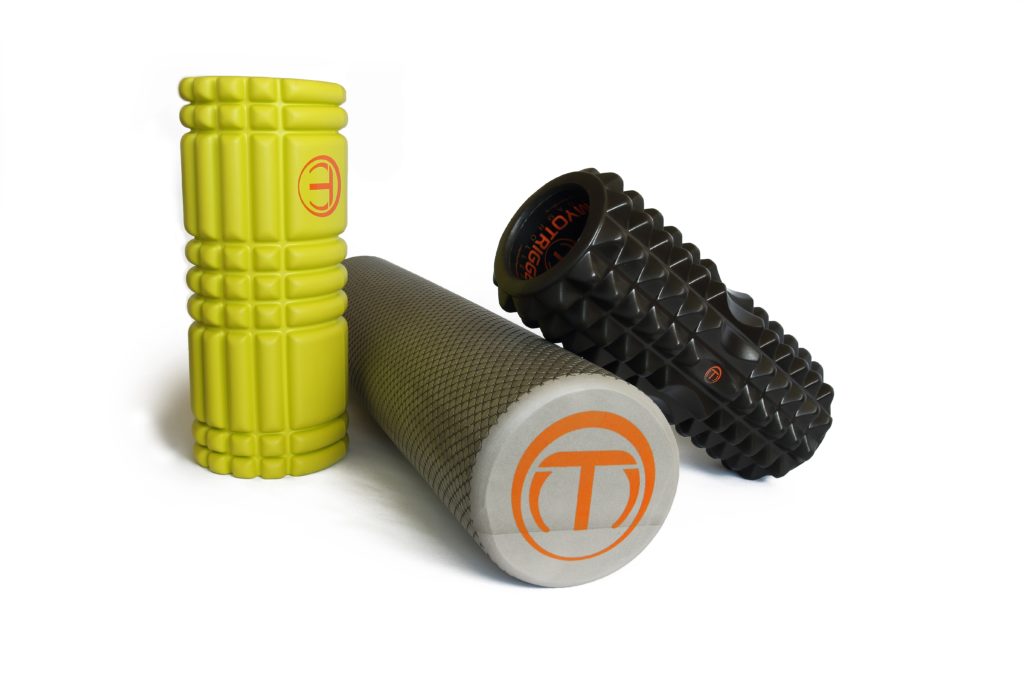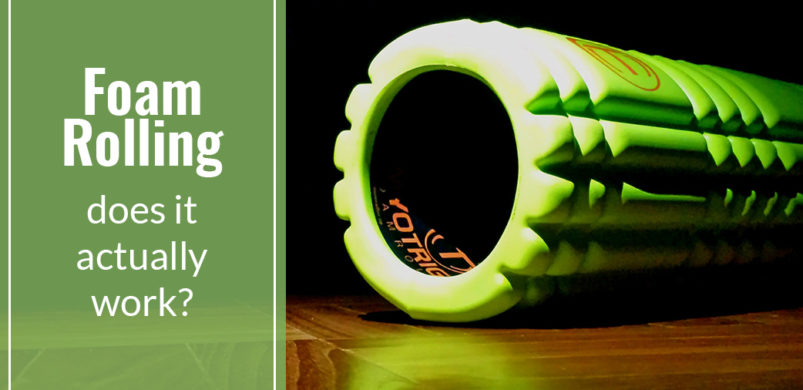What is Foam Rolling?
A foam roller is a large tube with padding around it. It is used by fitness enthusiasts to help roll out large muscle groups before and after workouts. You place the foamy tube on the ground and glide different body parts over it allowing the tube to help roll out knots and sore areas.

Does Rolling Out Actually Work?
Increase Flexibility & Reduce Fatigue
Studies have shown that a quick foam rolling session coupled with dynamic stretching helps increase flexibility, improve performance, and reduce fatigue. ¹
Reduce Post-Workout Soreness
Studies have also shown that foam rolling after a workout helps reduce the amount of soreness felt and the duration for which soreness is felt. ¹
Another important note is that with the current research done on foam rolling, no studies have found foam rolling before a workout to be damaging to the workout in any way. ¹
How Does Foam Rolling Work?
There is currently a bit of a debate on this question. The more highly accepted answer currently, has to do with a self-myofascial release.
What the heck is self-myofascial release?
The Manual Release of Joint-Blocking Tissue
The current belief is that the myofascial tissue surrounding joints makes it difficult for them to move. The manual release of this tissue helps open up the joints, increase blood flow, and allows the body to have a higher flexibility. ²
Firing Up the Central Nervous System
However, there is a second thought currently being looked into that has nothing to do with the facia at all; in fact, according to some physiologists, to have any affect on fascia you would have to push much harder than the average person is able to do to themselves. It is instead believed that foam rolling the muscles fires up the central nervous system which reacts to pain, and helps increase blood flow and heart rate. ³
In a similar “central nervous system” regard, it is believed that foam rolling stimulates pressure receptors underneath the skin which wake up parts of the brain that release hormones to reduce stress and release cortisol which allows us to increase our pain threshold. ³
So we haven’t exactly figured out the details behind why this practice works so well, but scientists are working testing a few different ideas.
Should Foam Rolling Hurt?
There is some mild pain that comes with foam rolling; you are pushing on knots and sensitive areas of the muscle. It should be a kind of “good” pain though, never stabbing or unbearable.
How Long Should I Foam Roll?
Foam rolling should be slow and steady down each muscle. Don’t ever spend more than 20 seconds in a single spot. Foam rolling the main muscles groups of the body should only take 5-10 minutes. Don’t over-do it, you don’t want to cause further pain to sore or injured areas of the body.
Resources:
